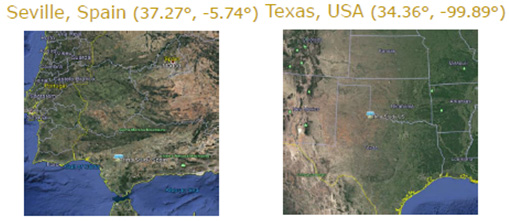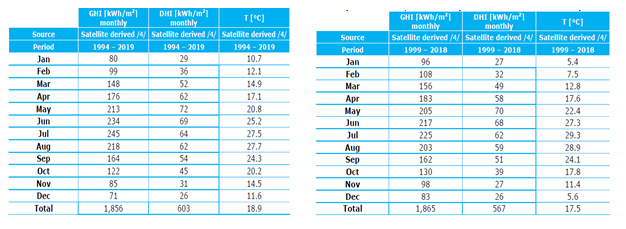The Way to the Best LCOE Part I: DNV GL Evaluation
- 20/12/01
- Customer Value,210 Modules Comprehensive Analysis
System Value Assessment For Trina 600W+ Vertex Bifacial-Dual-Glass Module with Single-Axis Tracker
Since 1997, Trina Solar has been driven by innovation, reliability, quality and customer value. Since the release of the first advanced Vertex 210mm modules in February 2020, the product line has been stacked with different products including Vertex S 400W module, and the Vertex series of 500W, 550W and 600W modules and beyond, which fit well with the applications of residential, commercial and large scale power plant, as well as multiple scenarios of agriculture and fisheries .
In the era of grid parity, the Vertex series have a prominent edge in Levelized Cost of Energy (LCOE). Foreign and domestic leading design institutes and well-known third-party organization DNV GL have evaluated the LCOE advantage and value of Vertex 210mm modules, notably the bifacial dual-glass Vertex series. The report finds that the 545W bifacial dual-glass Vertex module has the best Levelized Cost of Energy (LCOE), and performs significantly better than the conventional 166mm, 450W and 182mm, 535W modules in terms of BOS costs.
High-power, high-efficiency modules are getting inevitably popular in the era of grid parity. With its top-notch research and development of ultra-high-efficiency modules, Trina Solar has led the industry into the 600W+ era, with a host of high-power, high-efficiency, high-yield and highly reliable products. More discussions are surrounding how ultra-high-power modules can best preserve customer value by reducing cost. Trina Solar’s innovative “low voltage, high string power ” design concept has drawn attention from the industry. To further prove this as the best LCOE reduction strategy, Trina Solar invited DNV GL to evaluate such design in terms of BOS costs and LCOE. Through the comprehensive and objective evaluation system and methodology by an independent third party, the design concept of “low voltage, high string power” can be demonstrated to the industry and customers.
Assumption for assessment
To fit different solar projects, the assessment took place in typical photovoltaic sites in Spain and Texas, US, with the coordinates and climate as follows:

Coordinates of the projects

Local weather information
In these locations, DNV GL compared the BOS costs and LCOE of the bifacial dual-glass 166mm, 450W module, 182mm, 535W module, and the Vertex bifacial dual-glass 210mm-545W module, based on fixed 100MW AC capacity, with the same DC/AC ratio design at the power station. In terms of system design, the projects adopted a single-row, one portrait mounted, single-axis (1P) tracker, equipped with a string inverter. The ground cover ratio (GCR) is fixed to ensure the consistent shadow occlusions on the bifacial module. Such design aims to maintain control over climate and project design, while objectively comparing merely to impact on costs and LCOE based on a different module. To make the comparison more meaningful, the trackers and inverters used are all mainstream products. The costs of the three tested sytem are based on local costs so that it is consistent, comprehensive and objective when comparing the on-grid tariff as well as the costs of operation and maintenance.
Parameters of power station design and 3D simulation diagrams as below:


Parameters of the power stations
Assessment results:
In the Spanish project site, while compared to the 166mm bifacial dual-glass, 450W module, Trina Solar’s Vertex 210mm bifacial dual-glass 545W can save the initial investment by 2.16 Euro cents per watt, reducing LCOE by about 3%. Compared to the 182mm bifacial dual-glass, 535W module, the initial investment is down by 0.2 Euro cents per watt, reducing LCOE by 0.3%.
For the project site in the United States, while compared to the 166mm bifacial dual-glass, 450W module, Trina Solar’s Vertex 210mm bifacial dual-glass 545W can save the initial investment by 4 US cents per watt, reducing LCOE by about 3.9%. Compared to the 182mm bifacial dual-glass, 535W module, the initial investment is down by almost 1 US cents per watt, reducing LCOE by 0.5%.

Comparison of estimate costs
Through the comparisons, Trina Solar’s Vertex can significantly reduce costs, LCOE in particular, thanks to its superbly efficient power generation capacity and its low-voltage, highstring power design. On the one hand, the 210mm modules’ 545Wultra-high power can reduce the numbers of modules in the setup. On the other hand, the iconic low-voltage design in Vertex 210mm module can string up more modules with the 1,500V voltage, which can boost the single string power with fewer strings connected. In turn, it can save the material and labor costs of DC cable work, and thus lowering the initial investment.
The above calculations match with the existing mainstream 1P trackers. DNV GL further elaborates, “With the further optimization and extension of the tracker length, the 545W Vertex 210mm-Module will save more in BOS cost and LCOE than the other two modules, giving it more edge.” Currently, the 600W+ Alliance and mainstream tracker makers are either developing or launching more optimized trackers for these modules.
With the close partnership in the 600W+ Photovoltaic Open Innovation Ecological Alliance members, along with the design mindset of low voltage , high string power, modules, trackers, inverters as well as solutions are all in place. This is a critical step for the photovoltaic industry to reach the best LCOE.
In conclusion, Trina’s Vertex 210mm module and its low-voltage high-string power design can significantly save the system’s BOS cost and LCOE. It sets a new cost-saving standard, ultimately ensure the project’s earnings and maximize customer value, making PV solar energy more cost competitive.
* For more information about the assessment report on Trina’s Vertex modules, please contact Trina’s local sales representatives. And please follow “The Way to Best LCOE” series.
More in "The Way to the Best LCOE" Series
- Part II: Vertex Modules Conjoining Single-Axis 2 Portrait Installation (2P) Tracker
- Part III: 210mm Modules’ Advantages with Fixed Tilt
- Part IV: Monofacial Modules with Fixed Tilts
- Part V: Bifacial Modules with 1P Tracker
Relevant Topics
Smart Energy Solutions
delivered straight to your inbox

